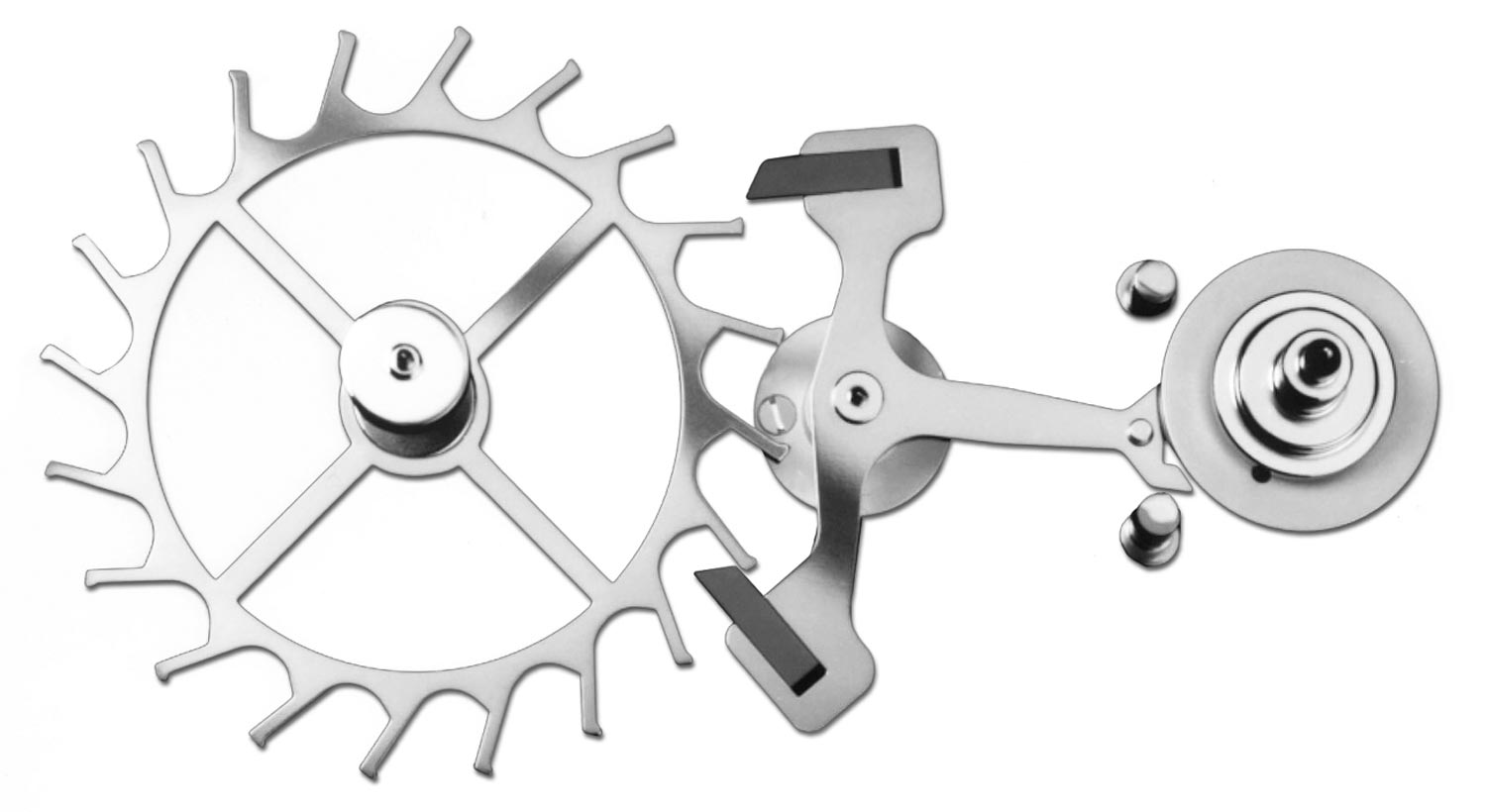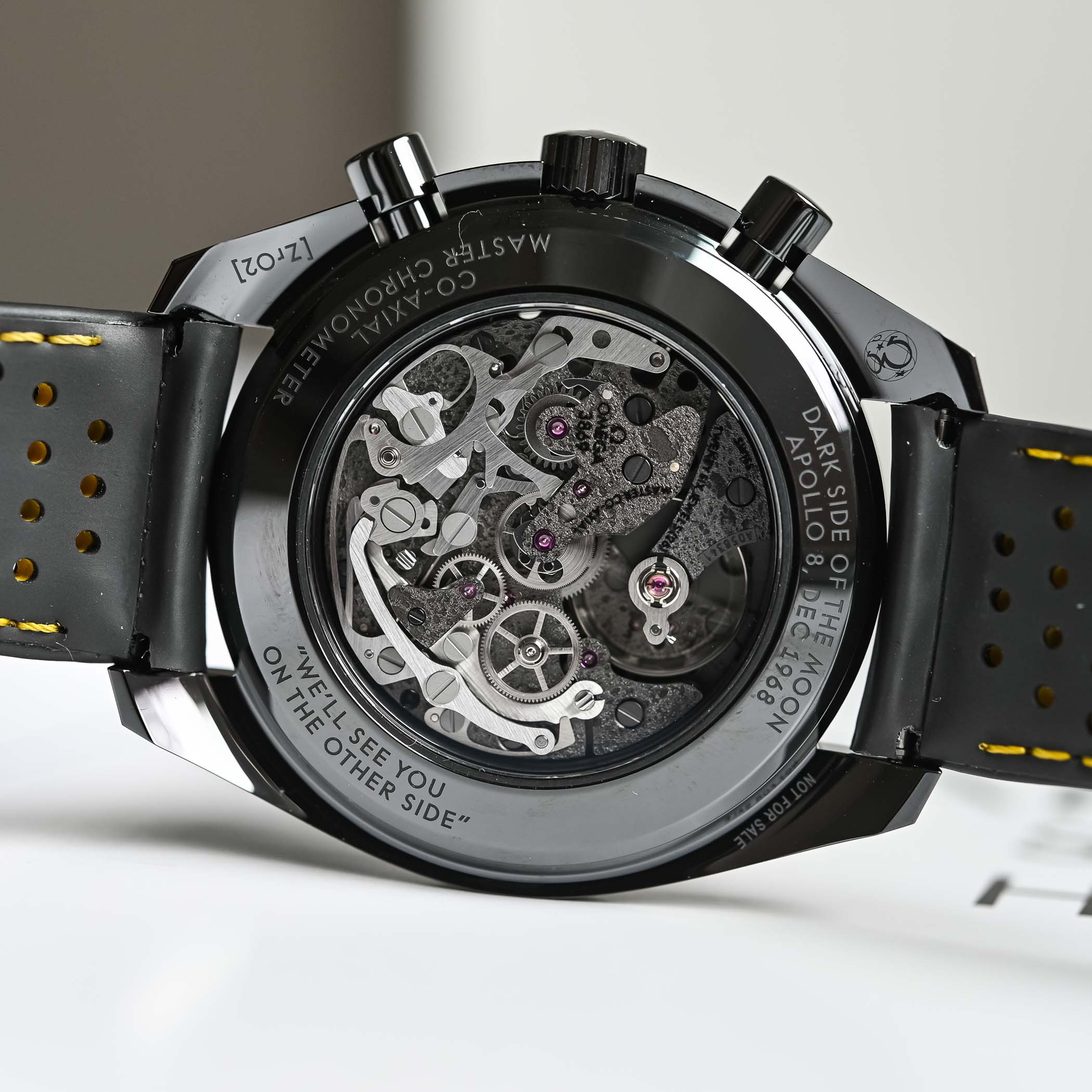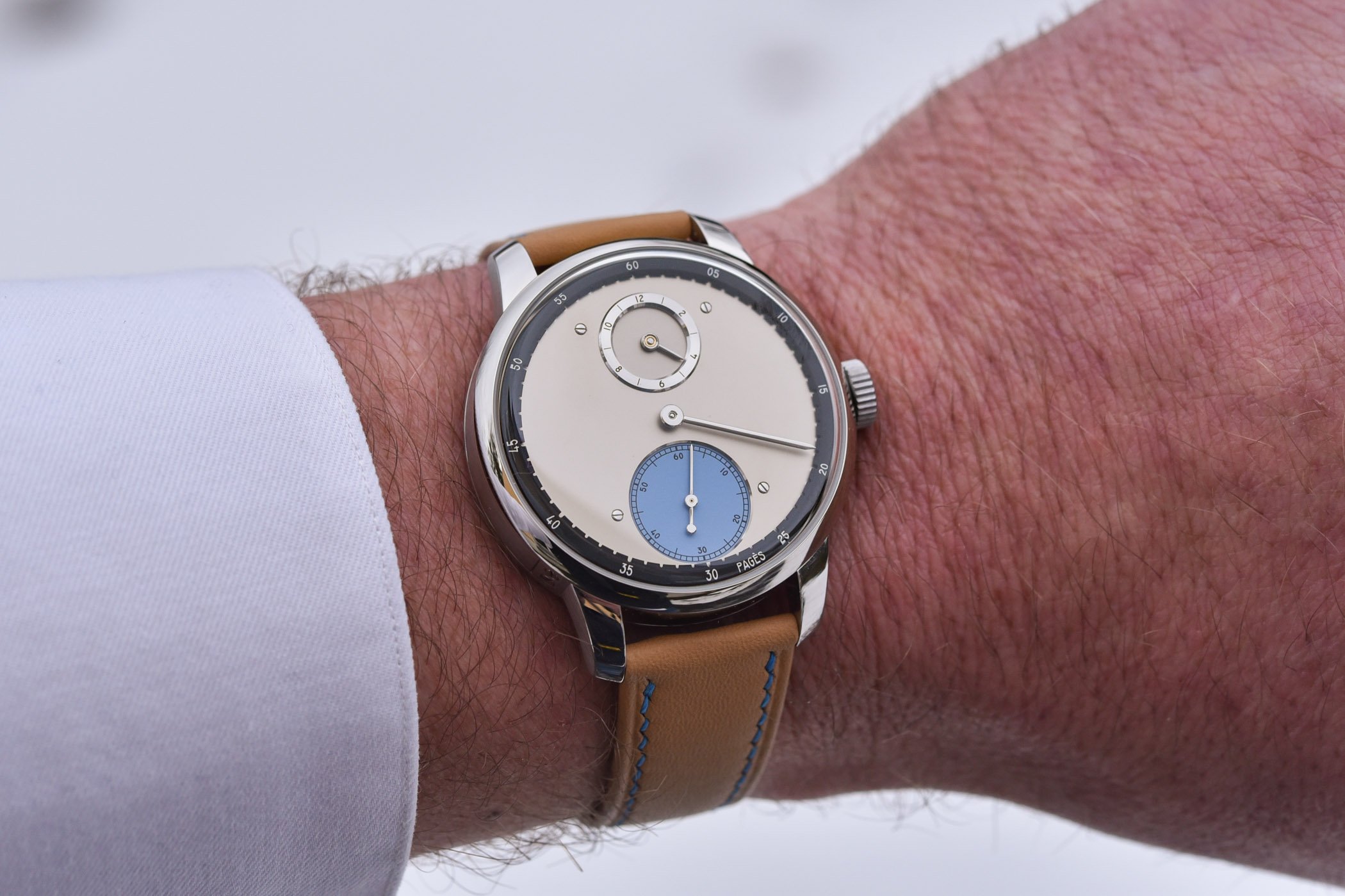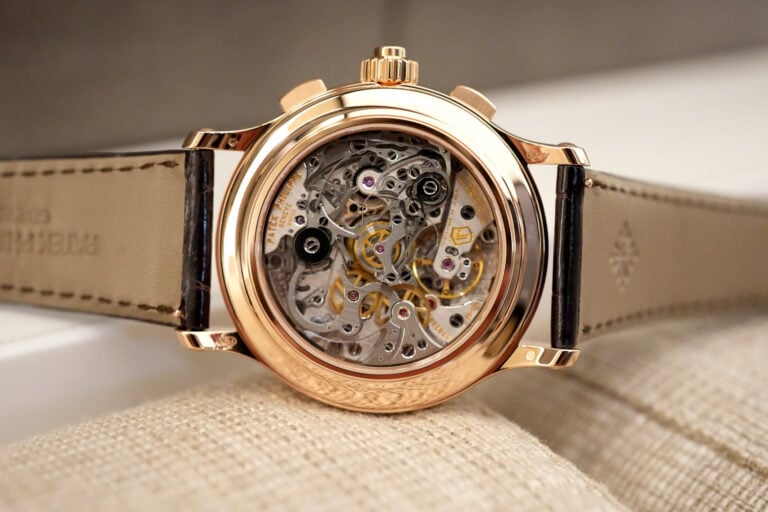The Buying Guide Goes Technical With Six Non-Swiss Lever Escapement Watches
What else is out there besides the all-too-common Swiss Lever Escapement?

Like clockwork, every Sunday, we group together a bunch of watches around a common theme in our Buying Guide. This can revolve around a whole range of topics, such as colours, shapes and materials but also a certain style or even complications. Very rarely do we go deep into the movement to distinguish a series of watches, but today is one of those days. The vast majority of the watches rely on the Swiss Lever Escapement, for which a sprung balance wheel works with a pallet fork and escape wheel to control the release of energy coming from the mainspring and, in turn, drive the hands. But there are different options than the not-so-efficient Swiss Lever Escapement out there, that are very much worthy of your attention! So, with that in mind, here are six watches that opt for different types of escapements to regulate a mechanical movement.

To clarify a bit more, the Swiss Lever Escapement has been around for centuries and finds its roots in the Lever Escapement invented by Thomas Mudge. Following that crucial development, several Swiss manufacturers started to refine it into what we now know as the Swiss Lever Escapement. Today it still follows the same principle and geometry, although innovations in materials and precision have made it very reliable. But, and this is important to some, it’s not perfect.

One of the issues is a relatively high level of friction between the pallet forks and the teeth on the escape wheel, necessitating lubrication. To combat this, manufacturers seek out lubrication-free materials such as Silicon or even play around with the geometry of the pallet fork and escape wheel (and its teeth). One of the most widely known alternatives is George Daniel’s co-axial escapement, something found in virtually all modern Omega watches. We’re not going to go through all the details of all the different types of escapements, but invite you to read our Technical Perspective on the evolution of the escapement, and subsequently, the complete regulating organ if you’re keen on learning more.
Cyril-Brivet Naudot Eccentricity Réserve de Marche – Libre Excentrique Escapement
The French independent watchmaker Cyril Brivet-Naudot does things very differently, and virtually everything by hand. Doing everything the traditional way is one thing, but to incorporate and improve a very unusual escapement is a whole other ball game! Cyril opted to use the Libre Excentrique Escapement, first developed by Louis Richard around 1860. This lost-beat direct-impulse escapement gives only a single impulse to the escapement, with two locking pallets controlling the movement of the escape wheel. This improves stability and shock resistance without losing the chronometric precision of this type of escapement. For more details, check out our in-depth story on the Eccentricity Réserve de Marche here.
For more details, please visit Brivet-Naudot.com.
Quick Facts – 38,5mm x 10.5mm – hand-made silver or gold case – sapphire crystal front & back – keyholes for winding & setting in back crystal – dial-mounted oversized balance wheel – off-centred timing display – grained mainplate – key-wound in-house movement – Libre Excentrique escapement – 18,000vph – 40h power reserve – direct barrel winding – hours, minutes (via fixed pointer), power reserve indication – alligator leather strap – made to order – from EUR 120,000
Omega Speedmaster Dark Side Of The Moon Apollo 8 – Co-Axial Escapement
Omega is well-known for its Master Chronometer certification but also for the co-axial escapement, first developed by George Daniels in the 1970s. This groundbreaking innovation is the only mass-produced escapement alongside the Swiss Lever and found in this Speedmaster Apollo 8. Again aiming to reduce friction and improve stability, the co-axial escapement doubles the number of pallets and splits their function across two pairs. One pair locks/unlocks the escape wheel, and the other pair receives and transmits impulses to the balance wheel. Thanks to this system, friction is greatly reduced, meaning less wear and tear on components, and thus a longer service interval. We highly recommend checking out our in-depth video on the Omega co-axial escapement for more details.
For more details, please visit OmegaWatches.com.
Quick Facts – 44.25mm x 13mm – black Zr02 ceramic case, brushed & polished – sapphire crystal front & back – fixed ceramic bezel with tachymeter scale – 50m water-resistant – skeletonized black anodized dial with lunar surface texture – blackened hands with SLN – yellow seconds & chronograph hands – Saturn V small seconds hand – Calibre 3869, in-house automatic – Master Chronometer certification – co-axial escapement – 21,600vph – 50h power reserve – black & yellow rubber strap with folding clasp – non-limited edition – EUR 15,700
Raul Pages regulateur à Détente rp1 – detent escapement
The detent escapement is most commonly associated with marine chronometers, often suspended in gimbal-like constructions to keep them level. It’s rather efficient as it is a direct impulse escapement, considerably reducing friction. Rarely has such an escapement been used in wristwatches though, due to the fact it’s not self-starting and very susceptible to shocks. The solution provided by Raúl Pagès in the Regulateur à Détente RP1 is to pivot the detent (arm) of the escapement and fit the system with an anti-tripping mechanism where a beak catches a notch in the roller. The escape wheel is only released when the beak of the detent penetrates this notch, and not when it’s hit with an unexpected shock. More details on this very clever solution can be found in our in-depth story here.
For more details, please visit PagesWatches.com.
Quick Facts – 38.5mm x 10.2mm – stainless steel case, brushed & polished – sapphire crystal front & back – 30m water-resistant – sand-blasted & diamond- and nickel-plated dial – raised minute & hour rings – blue small seconds subdial – steel hands – in-house movement, hand-wound – 171 components – 47h power reserve – pivoted detent escapement with anti-tripping system – offset hours, central minutes, small seconds – black or beige leather strap – CHF 85,000 (excl. taxes)
Laurent Ferrier Classic Traveller magnetic green – Natural Escapement
The Natural Escapement was invented by Abraham-Louis Breguet in an attempt to improve chronometry. The idea was to create an escapement incorporating two escape wheels, where the impulses are transmitted to the balance wheel as directly as possible. This would eliminate sliding friction, which is one of the weaknesses of the Swiss Lever escapement. Laurent Ferrier’s Natural Escapement was presented in 2011 and is a variant of the first variant Breguet developed, where the two escape wheels mesh, with the first escapement wheel also driving the second one as part of the geartrain. This Natural Escapement is used in Ferrier’s stunning micro-rotor movement that powers the Classic Traveller (seen here in Magnetic Green), among others. More details can be found here.
For more details, please visit LaurentFerrier.ch.
Quick Facts – 41.0mm x 12.64mm – grade 5 titanium case, polished – sapphire crystal front & back – 30m water-resistant – magnetic green dial with sunburst – snailed small seconds subdial – white gold markers & hands – Calibre LF230.02, proprietary – automatic with micro-rotor – 288 components – 21,600vph – 80h power reserve – Natural Escapement – hours, minutes, small seconds, date – integrated titanium bracelet with folding clasp – CHF 62,000
bernhard Lederer Central Impulse Chronometer – Central Impulse Escapement
An evolution of the natural escapement comes in the form of the Bernhard Lederer Central Impulse Chronometer. Based on the principle of the independent double-wheel escapement by George Daniels, this is fitted with two barrels, two independent gear trains, two remontoirs d’égalité and a central impulse escapement regulating both sets. Thanks to Reuleaux triangle remontoirs, Lederer has managed to smooth out the driving force to an extremely fine level. The geometry of the escapement parts has been adapted for optimal functioning. More on the Central Impulse Chronometer, which now also comes in two very handsome red gold and 904L stainless steel editions, can be found here.
For more details, please visit LedererWatches.com.
Quick Facts – 44mm x 12.2mm – 18k rose gold or 904L steel case – sapphire crystal front & back – 30m water-resistant – dark rhodium or pacific blue dial – exclusive Lederer guilloché decoration – openworked leaf-shaped hands – Calibre 9012, manually wound – 21,600vph – 38h power reserve – two barrels, two independent gear trains, two remontoirs d’égalité, central impulse escapement – hours, minutes, dual small seconds – calfskin leather strap – limited edition of 25 pieces each – CHF 138,600 (excl. taxes)
Girard-Perregaux Neo Constant Escapement – buckling blade Escapement
A decade and a half ago, Girard-Perregaux first filed a patent for their revolutionary concept to achieve constant force in a watch movement, one of the holy grails of watchmaking. The brainchild of Nicolas Déhon, the Buckling Blade escapement has been further improved in the recently introduced Neo Constant Escapement. The lower half of the movement shows this incredible development, with the large silicon escapement spring in full view. This, and all other significant improvements over the first iteration result in a much higher efficiency and a guaranteed minimum power reserve of 7 days. The escapement is also now self-starting and comes with COSC certification. For more technical details on this masterpiece, check out our video review here.
For more details, please visit Girard-Perregaux.com.
Quick Facts – 45mm x 14.80mm – grade 5 titanium case – sapphire crystal front & back – 30m water-resistant – openworked dial with indices on outer ring & semi-openworked hands – Calibre GP09200-1153, in-house – manual winding – 21,600vph – minimum 7-day power reserve – constant force escapement – hours, minutes, seconds – black rubber strap with micro-adjustable titanium triple-folding buckle – EUR 105,000






















4 responses
Hi team – I don’t believe the Sport Auto uses LF’s natural escapement. They opted for a traditional Swiss level for greater robustness for a sports watch.
That Lederer is spectacular.
Don’t forget about Grand Seiko’s dual impact escapement…
Really, no Charles Frodsham?